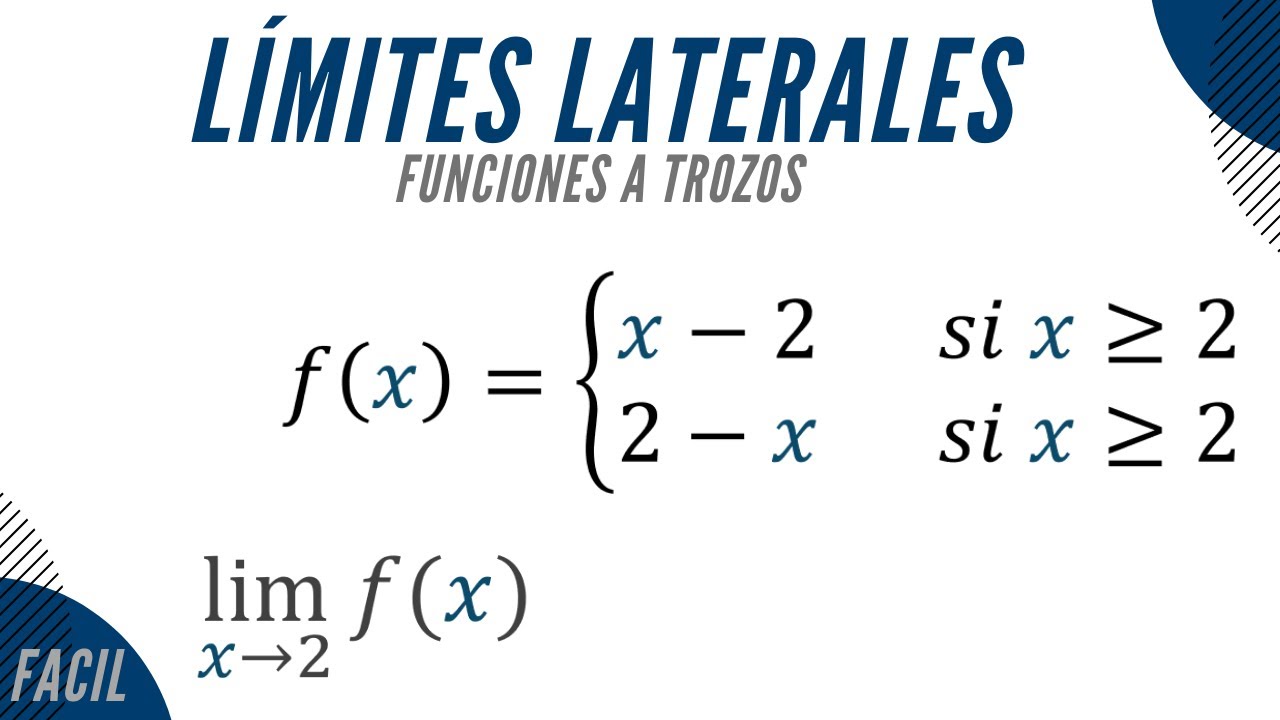LÍMITES al INFINITO 📈 Cómo Calcular Límites
Summary
TLDREn este vídeo tutorial, Susi enseña cómo calcular los límites cuando x tiende al infinito. Explica que al substituir x por infinito en una función, el término de mayor grado domina el resultado. Detalla cómo operar con infinitos, señalando que un número dividido entre infinito da cero, mientras que infinito dividido entre un número sigue siendo infinito. También menciona indeterminaciones como infinito dividido por infinito o infinito menos infinito, y promete explicárselos en futuras videos. Finalmente, invita a suscriptores y compartidores para recibir más contenido educativo.
Takeaways
- 🔢 Para calcular límites cuando x tiende a infinito, se sustituye x por infinito en la función.
- 🌌 Multiplicar un número por infinito resulta en infinito, y elevar infinito a cualquier potencia también es infinito.
- 📉 Al dividir un número por infinito, el resultado es cero, ya que se considera que infinito entre un número es casi nada.
- 📈 En fracciones, si el denominador tiende a infinito, el valor de la fracción tiende a cero.
- 🔄 Si el numerador y el denominador de una fracción tienden ambos a infinito, se puede llegar a una indeterminación.
- 🔄 Identificar indeterminaciones es crucial para resolver límites cuando x tiende a infinito.
- 📚 Se debe entender que el grado más alto de x en una fracción o polinomio es el que domina el comportamiento del límite.
- ⚠️ Cuídate de las raíces al calcular límites, ya que elevar a una fracción cambia el exponente.
- 🔄 En casos de indeterminaciones como infinito entre infinito o infinito menos infinito, se requiere un tratamiento especializado.
- 📘 Recordar que un número dividido entre infinito es cero y que infinito dividido entre un número es infinito, es fundamental para operar con infinitos.
Q & A
¿Qué tipo de límites se discuten en el video?
-Se discuten los límites cuando x tiende a infinito o a menos infinito.
¿Cómo se sugiere calcular los límites cuando x tiende a infinito?
-Se sugiere sustituir el infinito o el valor que x tiende por x en la función.
¿Qué pasa con la operación de infinito más infinito?
-La suma de infinitos da como resultado otro infinito.
¿Cómo afecta un número finito a un número infinito en una operación?
-Un número finito no afecta la magnitud de un número infinito; por ejemplo, infinito más seis sigue siendo infinito.
¿Cuál es el papel de los términos con mayor grado en una fracción cuando se evalúa el límite?
-Los términos con mayor grado en una fracción suelen dominar el resultado del límite.
¿Qué ocurre cuando se divide un número entre infinito?
-Cuando se divide un número entre infinito, el resultado tiende a cero.
¿Cómo se maneja la raíz de un número infinito?
-La raíz de un número infinito sigue siendo infinito.
¿Qué se debe tener en cuenta cuando hay exponentes fraccionarios en el límite?
-Cuando hay exponentes fraccionarios, el exponente interior se convierte en el numerador y el índice de la raíz se convierte en el denominador.
¿Qué es la indeterminación en los límites?
-La indeterminación es un resultado no determinado que se obtiene al evaluar un límite, como infinito dividido por infinito.
¿Cómo se sugiere aprender sobre los límites y las indeterminaciones?
-Se sugiere entender el concepto en lugar de memorizar, ya que la memoria puede fallar en momentos de estrés.
¿Cuáles son las reglas para recordar cuando se maneja infinito en una operación?
-Se mencionan reglas como 'un número entre infinito es cero' y 'infinito entre un número es infinito'.
Outlines

此内容仅限付费用户访问。 请升级后访问。
立即升级Mindmap

此内容仅限付费用户访问。 请升级后访问。
立即升级Keywords

此内容仅限付费用户访问。 请升级后访问。
立即升级Highlights

此内容仅限付费用户访问。 请升级后访问。
立即升级Transcripts

此内容仅限付费用户访问。 请升级后访问。
立即升级5.0 / 5 (0 votes)






